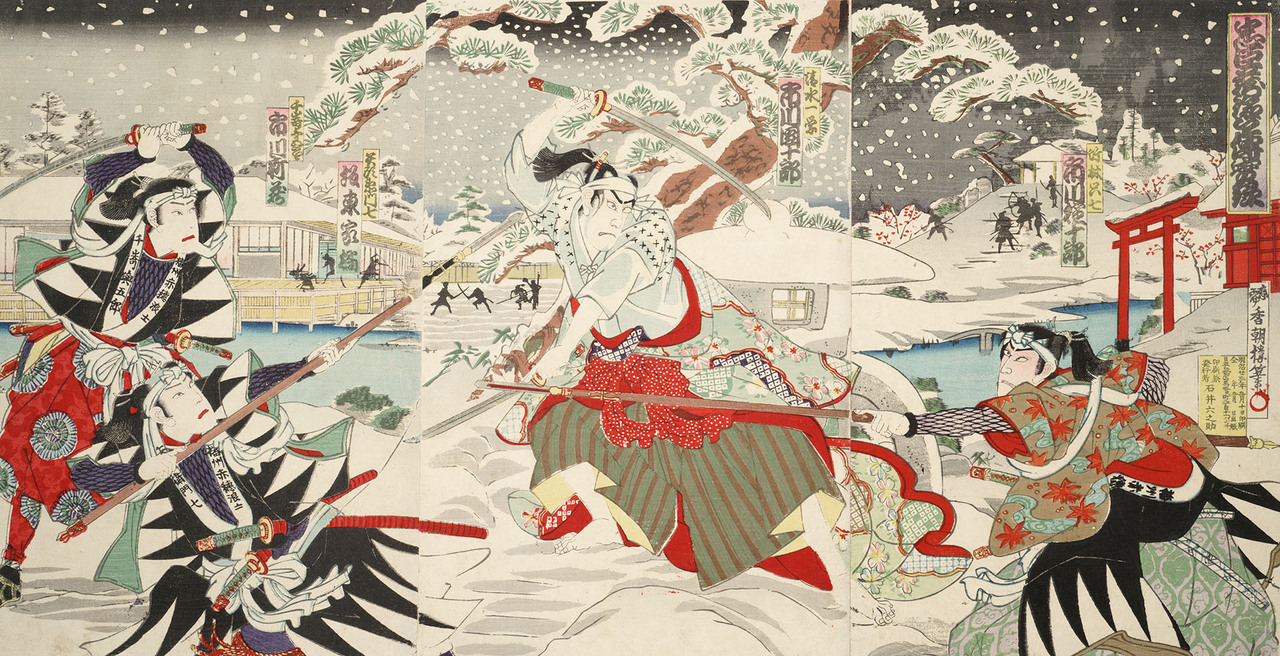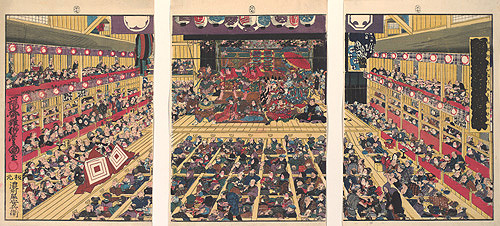K is for kabuki
Kabuki is a Japanese performing art that combines music, dance, pantomime, song, drama and comedy. It emerged in the 1600s, from traditional Japanese classical theatre and puppet show traditions.
The library’s Special Collections include remarkable 18th and 19th century Japanese woodblock prints related to kabuki, including external and internal theatre views, performances and actor portraits.

Scene from the kabuki play Kanadehon Chushingura (Revenge of the 47 Ronin, or “The Treasury of Loyal Retainers”)
Kochosai, 1823-?
Wood block print
1868-1912
Special Collections in the Arts
Kanadehon Chushingura is the most popular of all Kabuki plays and continues to be performed to this day. Inspired by historical events in the early 18th century, it tells the story of forty-seven Ronin (leaderless samurai) who must avenge their master.

View of a kabuki theatre interior during a performance
Utagawa Kunisada (also known as Toyokuni III), 1786-1865
Wood block print
1858
Special Collections in the Arts
This is an example of a typical Kabuki performance. The actor is dressed in magnificent costume and is supported by a stage attendant handing him props and arranging his costume during the action.
Explore more!
Discover more in our past virtual exhibit: Kabuki or by searching our Digital Archive.

